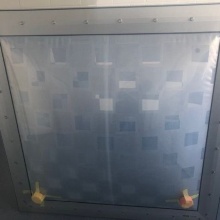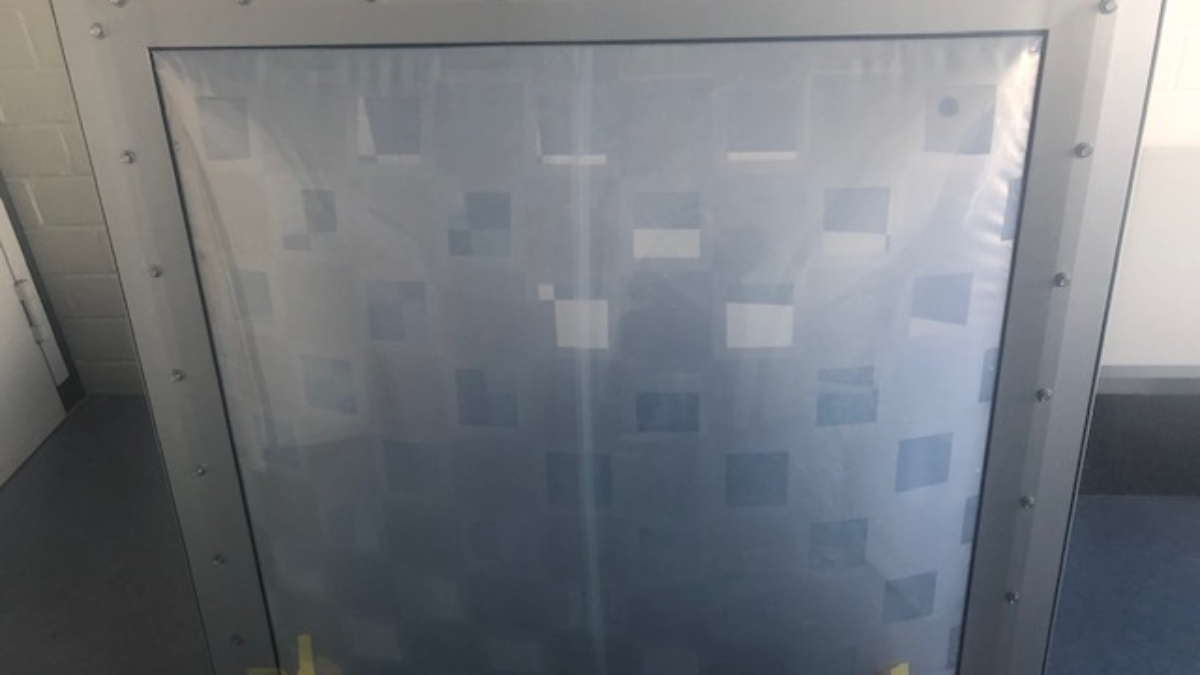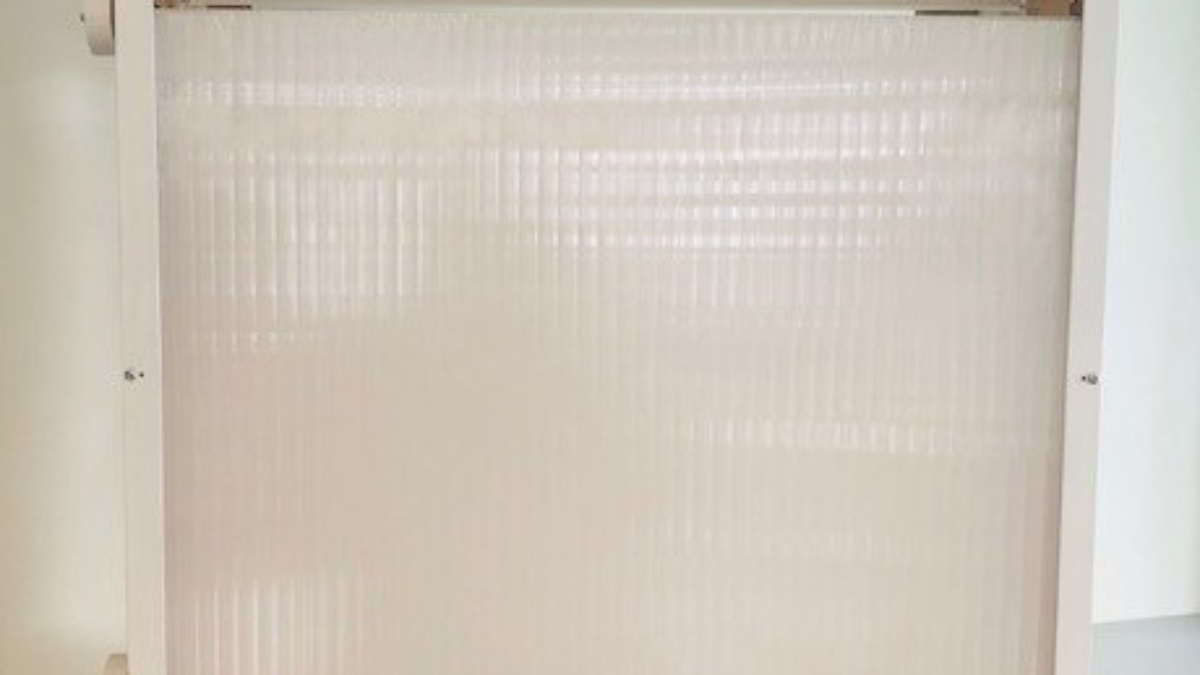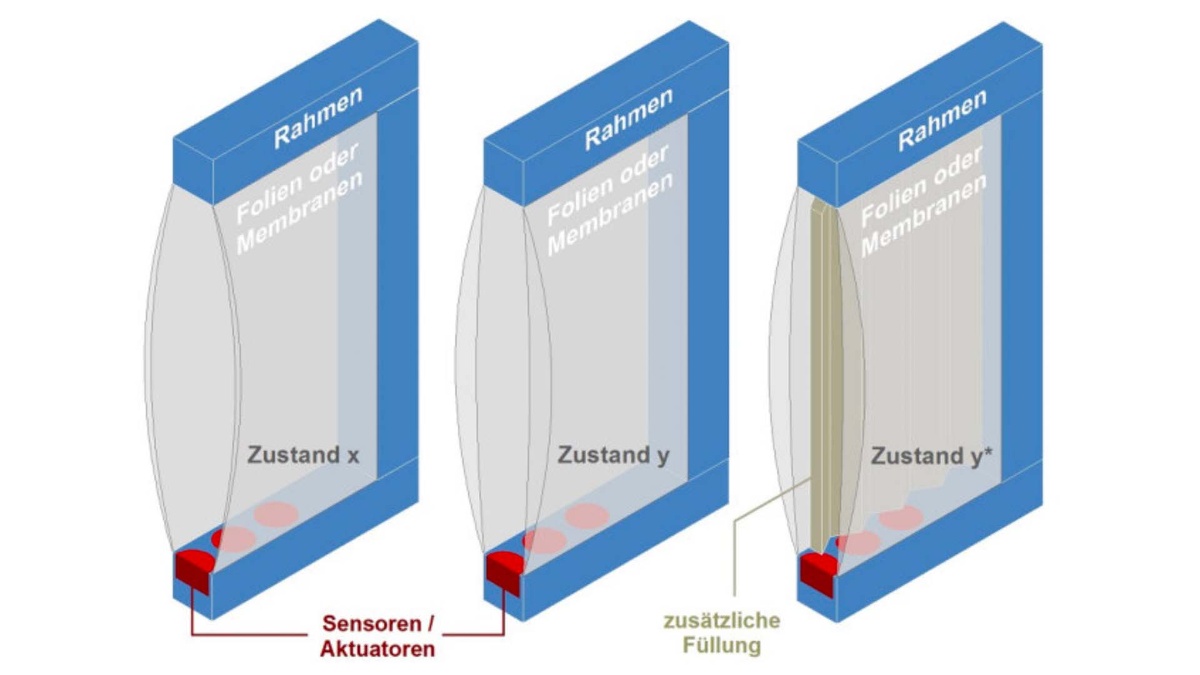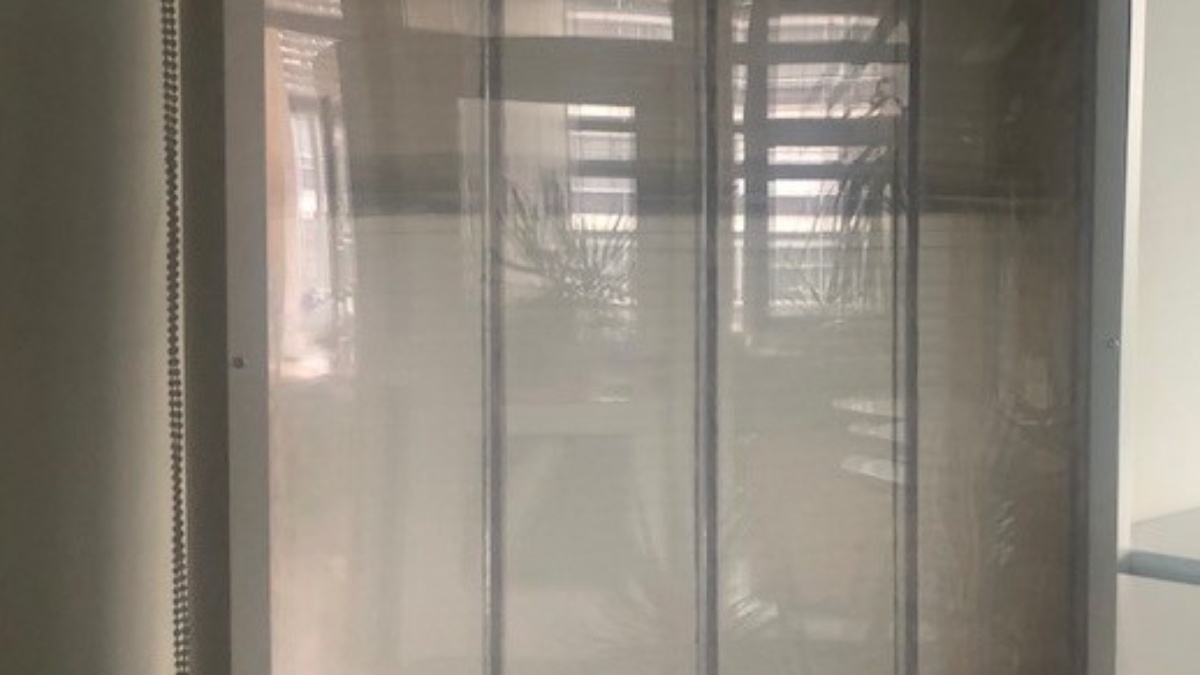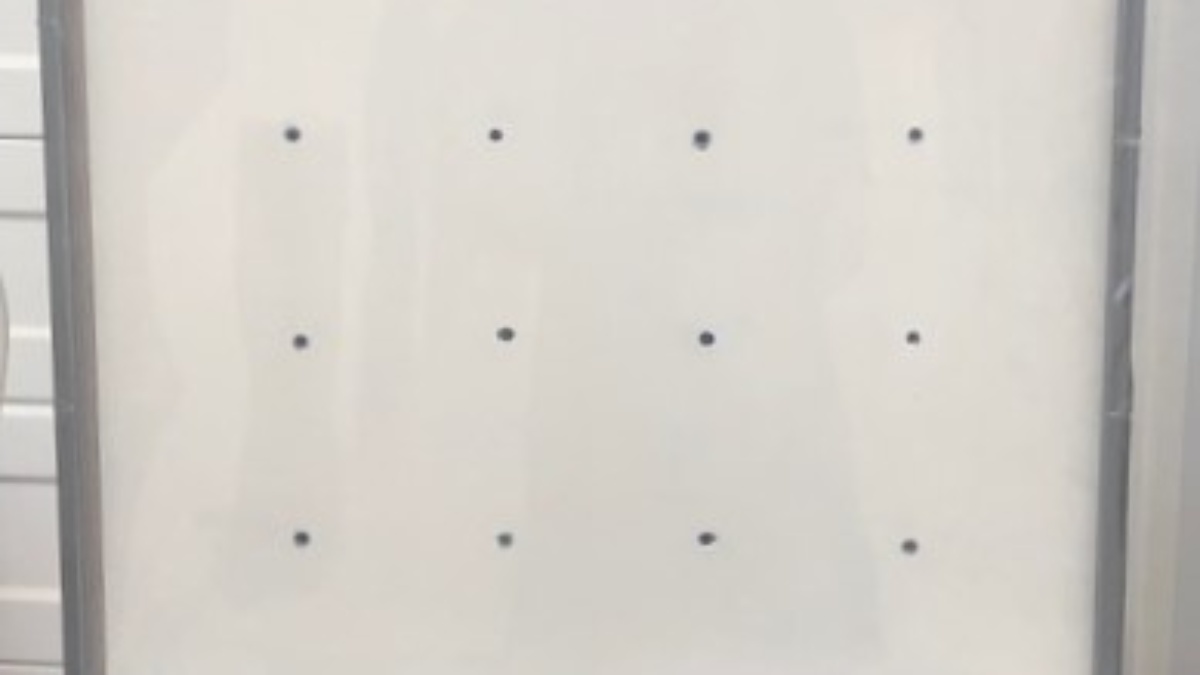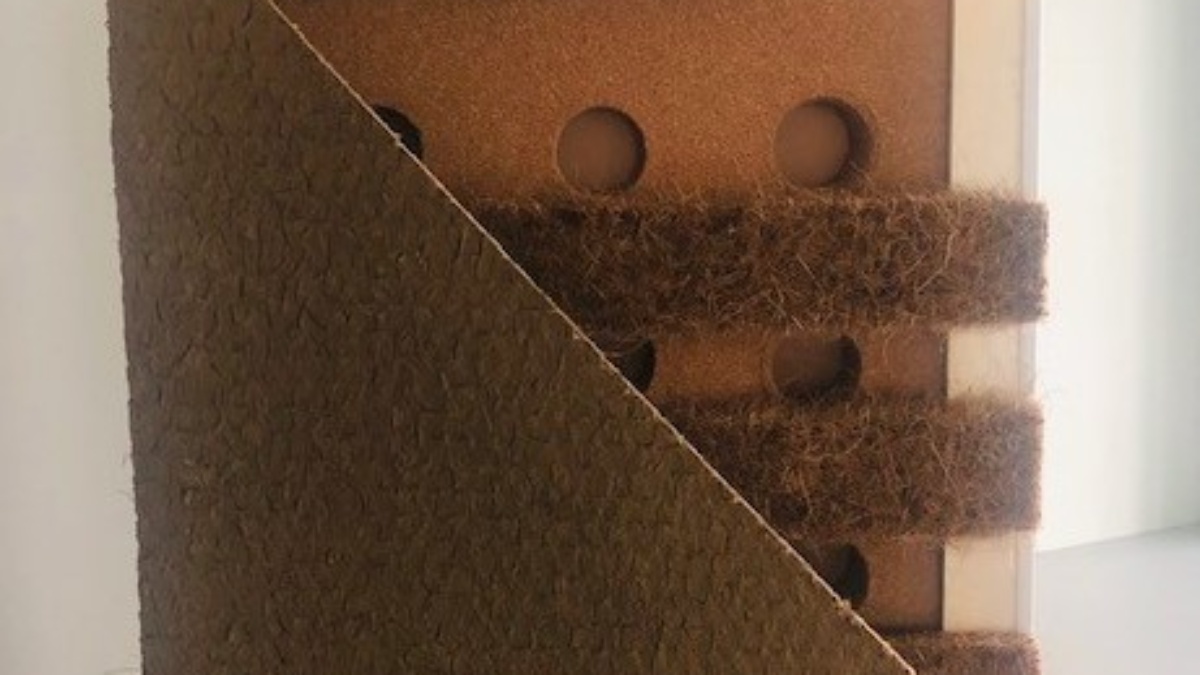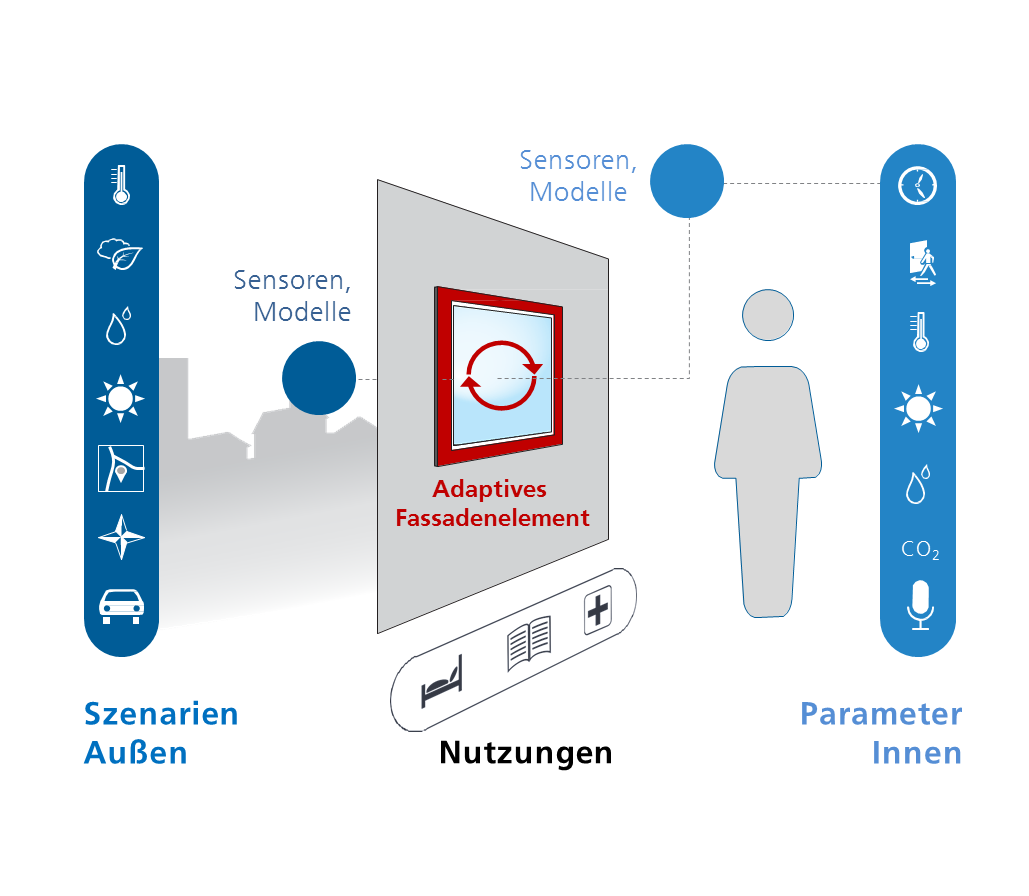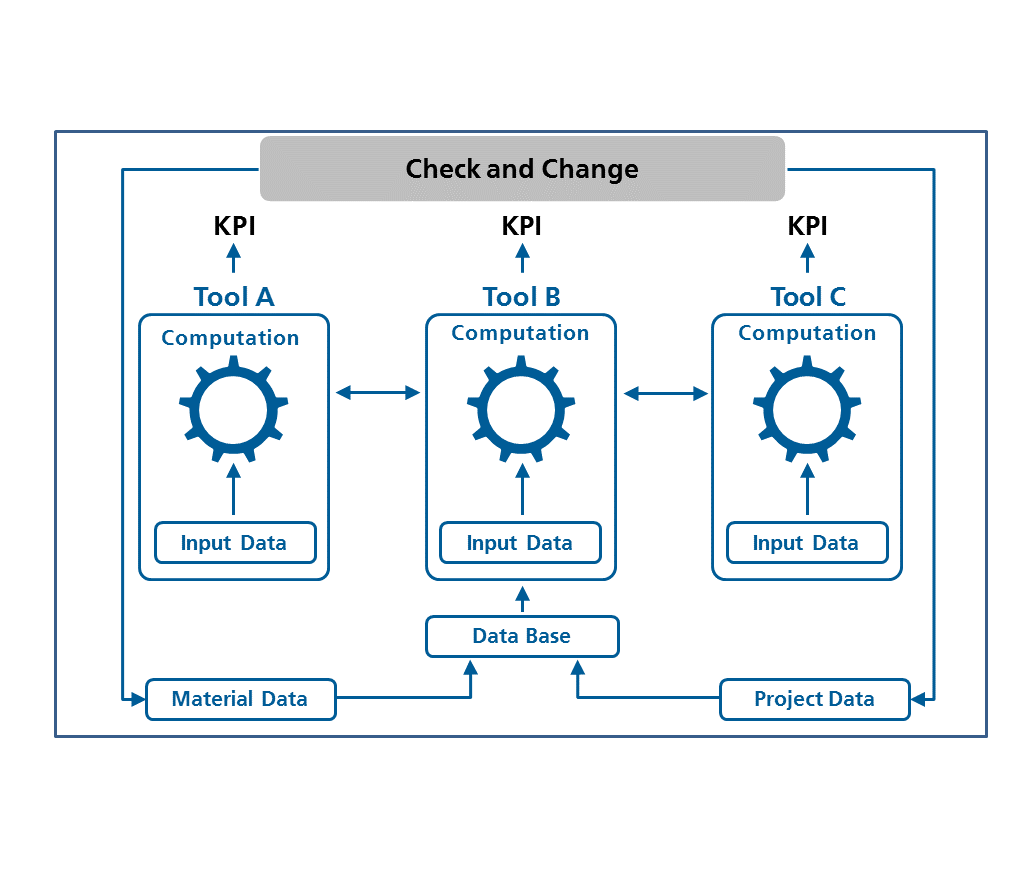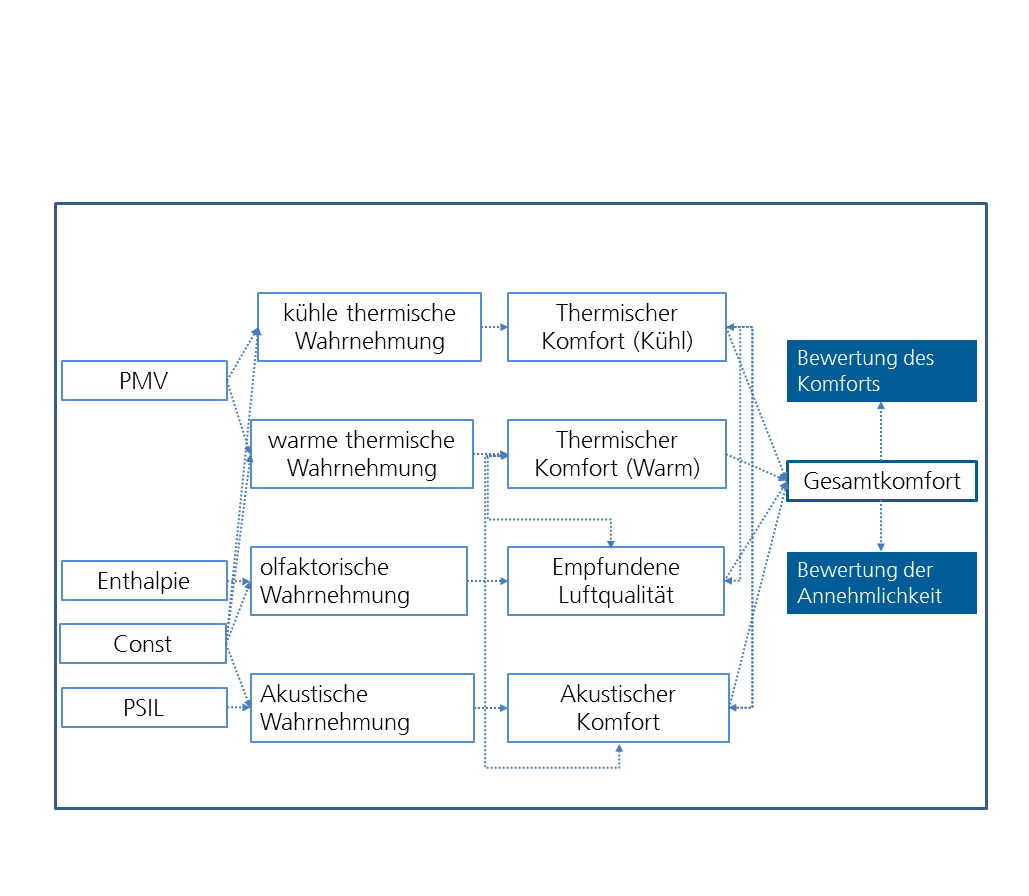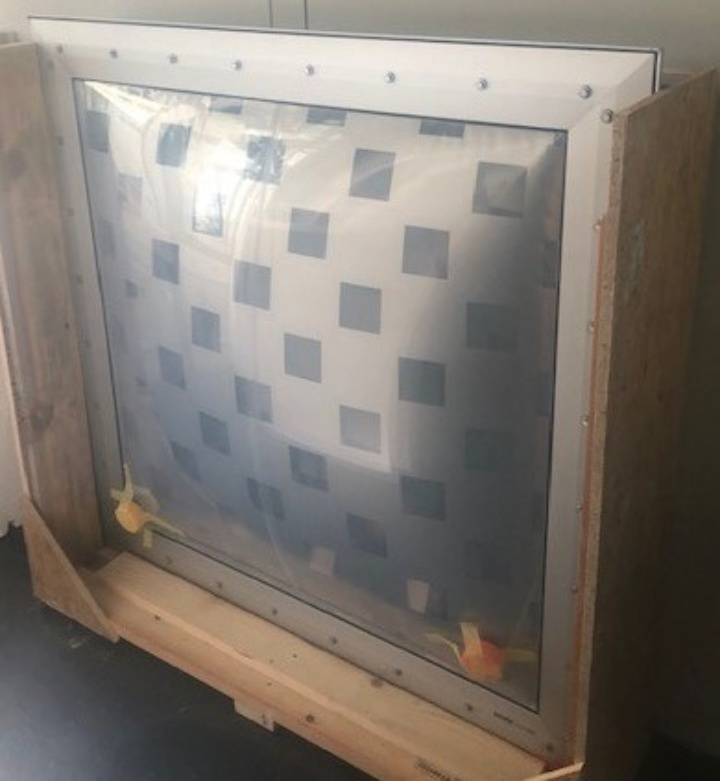Funding Phase II
Subproject C05 is dedicated to the modelling, development and prototypical testing of adaptive façade elements in terms of building physics. In the first funding period, their hygrothermal functionality and adaptivity were the main focus of the solution approaches, such as a multi-layer, pneumatically adaptable membrane element and flow-through elements made of folding core structures. Based on the promising experimental and computational results, the research question will be extended to other building physics parameters, such as acoustics, in the second funding period. In order to meet all requirements without conflicts and to be able to model façade elements that are integrally optimised, an efficient co-simulation method and an overall building physics evaluation system for adaptive façade elements will be developed and realistically tested with demonstrators.
Figure 1: Schematic representation of the multi-building-physical requirements for the regulation of the adaptive façade elements (Source: IABP)
Depending on the condition of an adaptive façade element, not only the controlled variable but also the other building-physical properties change. The value of a control variable can therefore be optimal from a thermal point of view, for example, but unacceptable from an acoustic point of view. It is therefore necessary to prioritise the individual building-physical properties depending on the utilisation scenario as well as an integral simulation procedure for the building-physical areas of acoustics, hygrothermics and for the life-cycle analysis (sub-project D02) in order to evaluate the façade elements holistically. In this project, the existing approaches are reviewed and further developed for the application of adaptive façade elements. The individual simulation methods, data availability and data exchange (interfaces) are considered for optimisation tasks.
Figure 2: Schematic representation of the coupling of simulation tools and use of the unified project database (Source: IABP)
Another objective of this subproject is the development of an overall evaluation system for adaptive façade elements. For this purpose, first the case-specific requirements (characteristic and numerical values) in the individual domains of building physics (acoustics, light, humidity, thermal comfort, air quality) are defined, which can thus also be integrated into the planning process of subproject A01.
Subsequently, the requirements are prioritised on the basis of typical or probable scenarios, e.g., time- and location-dependent climate and noise development. With the tools developed in this way and with well-known sensor technology and actuator technology, the functionality of the overall system consisting of facade elements and control concepts (subproject B04) can finally be evaluated. For this purpose, a real-scale application is planned as a demonstrator for the demonstrator high-rise building.
Figure 3. Overall evaluation model of an aircraft cabin based on measured variables of the multi-building physical disciplines (source: own representation according to Grün, Fraunhofer IBP).
Together with the simulations and experiments, an investigation will be conducted to determine the extent to which the complex planning and optimization task can benefit from novel visualization methods (subproject B05). The prospect consists in a transparent and clear comprehensibility for all those involved in the planning of the adaptive façade elements, which have very complex properties only from the point of view of building physics.
Subproject Leader
- Dr.-Ing. Philip Leistner, Institute for Acoustics and Building Physics
- Dr.-Ing. Sumee Park, Fraunhofer Institute for Building Physics
Funding Phase I
In building design, building-physical properties like sound insulation, moisture protection and heat insulation have remained permanent and passive. In terms of adaptive buildings, this procedure is changing: Building components and their properties remain adaptive throughout their life cycle. In order to provide the required building physics properties in appropriate dimensions, the symbiotic material behaviour needs to be taken into account.
Therefore, project C05 focuses on adaptive, building-physical material systems for adaptive surface and tructural element, among other things for switchable thermal insulation to evaluate, develope and access.
The first phase focuses in particular on the hygrothermal behavior of the adaptive building-physics material system. The potential is assessed in the first phase with regard to these criteria’s and examined for use in adaptive structures. Also considered are the topics of acoustics and sustainability as well as fire protection. Multifunctional building-physics studies then offer further research potential.
The following scientific questions arise in project C05:
- Which options are available for switchable heat insulation in adaptive buildings?
- Which materials should be used for switchable insulation systems?
- How can the selected material systems be modelled, virtually evaluated and assessed by involving different conditions?
- Can the developed material systems be described with existing characteristic values, or are there new characteristic values necessary?
Novel investigations of open-porous materials show the potentials of switchable heat insulation. The active control of the airflow or a pressure change within the skin construction can be particularly useful for lightweight or even lighter constructions, e. g. the airflow or pressure change within the construction. This approach allows to quickly change the heat conduction through the façade if it’s necessary.
In the project C05, suitable materials and open-pore insulation materials for the material systems are first developed and evaluated. Subsequently, a surface element is to be developed in which, in addition the thermal properties, the hygric, acoustic and when necessary visual functions are taken into account, with the hygrothermal properties in the foreground.
The aim is to gain comprehensive knowledge about the building-physical properties of newly developed adaptive surface elements. In a next step, the selected material systems are to be modeled, virtually evaluated and assessed for different outdoor and indoor conditions.
Afterwards, physical models and individual materials as well as their interactions will be examined whether these systems can be described reliably enough with current characteristic material values, or whether new values are needed.
Knowledge gained in project CO5 will be made available to other projects, especially to project DO2 for an integrated life cycle assessment.
Subproject Leader
- Prof. Dr.-Ing. Philip Leistner, Institute for Acoustics and Building Physics
- Dr.-Ing. Sumee Park, Fraunhofer Institute for Building Physics IBP
Contact

Simon Weber
M.Sc.Doctoral Researcher


